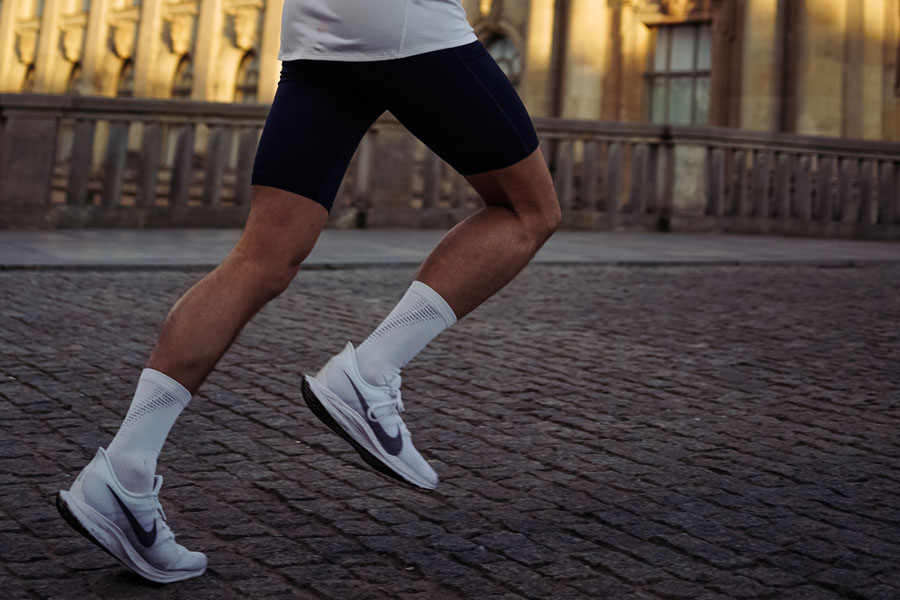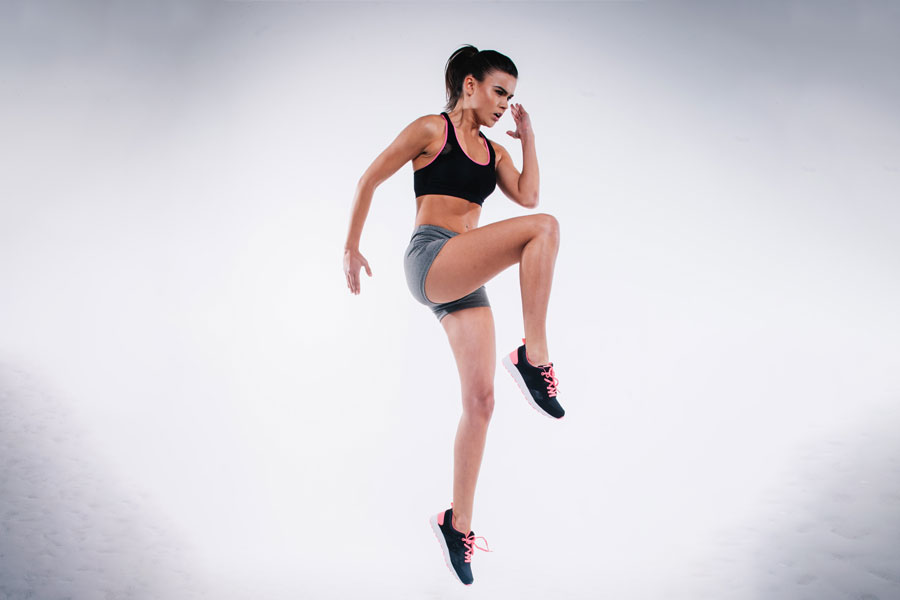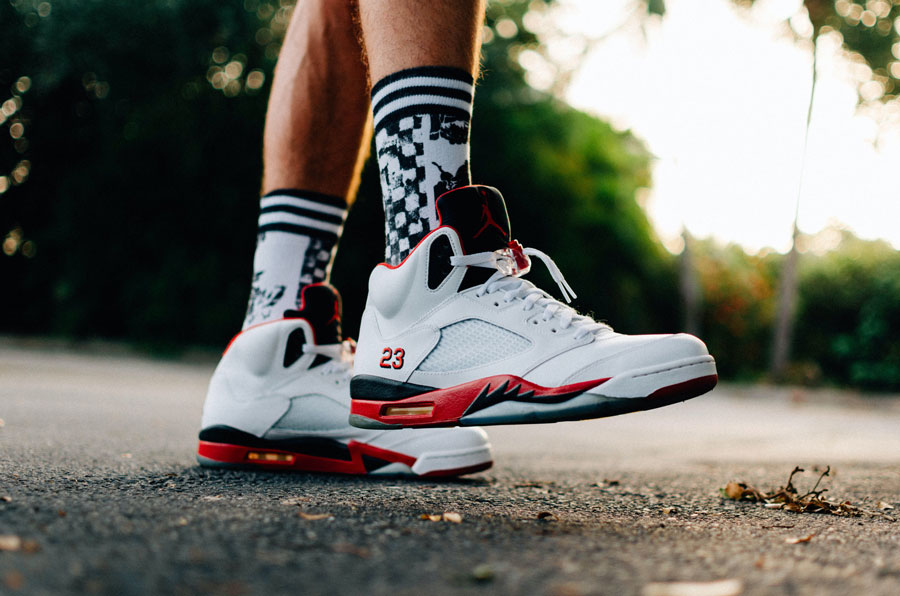
Running is the foam of the most fleeting movement of animals by their feet. It is a complicated and coordinated process in the human/ animal body, which heads both anaerobic exercise and aerobic exercise. In ancient times, humankind progressed to run as a life skill for them and mostly for safety and hunting animals for food. The idea of ambitious running emerged in religious festivals and Tailteann Games in Ireland. Moreover, many were interested in running owing to the amazing benefits it offers. The running techniques’ value then came to the stage, as it encourages better motor patterning and muscular recruitment. Methods will always lead you to improve the efficiency of your running and reduce the risk of fatigue.
There are many techniques to learn for a beginner. He should know how to breathe, maintain the best body posture, and ways to conserve energy. Running is ranging from rapid walking; while running, one foot is always in contact with the ground. The legs should keep mostly straight and center of gravity. The phrase running, therefore, can describe within the variety of speeds ranging from jogging to racing. This piece of article will educate you on why you should follow the correct techniques while running.
What are the basic running techniques?
A beginner or an expert must know about the following essential skills. “Think Small”- instead of thinking about long distend steps, try focusing on short footsteps. Short steps may waste less energy and will not cause muscle injuries. Meantime, the runner can count how many times your foot strikes the ground. This way, you will measure your steps per minute and make sure hundred and eighty degrees knocking the ground per minute is optimal. You will then control the overstriding.
“Walking” – It is advised to take 30-60 seconds walk break while running for a beginner. It is better if you can take one minute walking after one minute running. This little breakage will help the runner to remain strong throughout the entire workout.
“Exhale” – Try to exhale in every fourth step to create a regular and steady supply of oxygen to your lungs.
“Running tall” – It will be more helpful to your lungs when you keep your chest lifted and shoulders over your hip.
“Conserve energy” – Staying low to the ground is also a method to save your energy. Try bending your elbows and let arms hang free.
“Relax and put the right gear” – You must have a stress free mind while running.
Wearing your most comfortable outfit and selecting the most familiar environment will be easy for you to move on. If you are a female runner, choose the most suitable, fitted, proper bra with more support. Also, the essential outfit is your shoes. Remember to wear appropriate shoes with the right sole. We will discuss the “Locomotor effect of the shoes,” which helps run this article’s latter part.
How to measure running efficiency?
Efficiency use to describe something you gain without wastage and to use a minimum number of resources. You have run at the given speed using the least effort to call it the “running efficiency.” You can calculate running efficiency by pace per minute in miles/ kilometers. However, different methods are used for different kinds of running. For example, sprinters stay on their toes by bringing their legs up using long and short strides.
Running economy
Running economy can be defined as the runner’s energy usage while running at aerobic intensity. It regulates the VO2 (index of the body efficiency while engaging the work) while running on a treadmill or elsewhere at a consistent speed for three to fifteen minutes. VO2 configures the amount of oxygen consumes in milliliters over minutes, and it normalizes by body weight. Many psychological and physical factors affect measuring the running economy. People who can finish less oxygen consumption within a given running rapidity can consider a better running economy.
Yet there are few ways to increase the runner’s running economy. By expanding the stride rate, you can boost the efficiency rate. Increasing mileage is another thing you can consider. Encountered runners who have a better running economy fluctuate their distance annually and as a practice. Strength training is another useful fact you can try. This allows you to increase your physical muscular fitness. Therefore, the runners with good muscle compatibility score an excellent running economy. Losing extra weight is always a good practice to lead a happy life.
Unwanted fat in your body must dump soon to boost your running efficiency. Ploys or jump training is another useful tactic. This exercise strengthens your muscular system, and it will lead you to continue a better running economy.
Another most interesting fact in increasing the running economy is practicing better running techniques. We have discussed the basic strategies in the running from the above paragraphs. Now let us move on to the most vital part of our investigation. What are the proper running techniques a runner should try?
Why should you try correct techniques for running?
We all love to relax by engaging in a short run whenever we are able. It is an easy, cheapest way to gain body shape. But unfortunately, most of the runners refuse to practice a technique. Although they try to keep the speed and try long runs, they focus less on the methods. But do you know those correct procedures leads you to get higher efficiency in running and significantly reduce the injury risk? If you master running skills with proper techniques and enhance your efficiency, running will become the most enjoyable and the most accessible sport.
Continue the rhythm
An average healthy person should try out a 184 bpm (heartbeats per minute) of cadence. High cadence is most preferred. It encourages the foot to plot underneath the hips rather than overstriding. Nevertheless, most people believe that it is good to maintain a 160 bpm, leading you to get heel striking and poor posture. Continuing a 184 bpm will ease your heel striking and allow maintaining a good posture. You can set a target for metronome on 184 bpm and practice increasing your cadence.
Relax
Staying relaxed is a critical component. Relaxation will allow you to enjoy your running and won’t put too much pressure on your joints. A loosen warm-up body will always help you to run in a relaxed and comfortable manner. A relaxed pose will result in running efficiency and the speed of running.
Maintain a good form
It would be best if you have a sound idea about where you are going to keep your feet next. Your hips, knees, legs, arms, and neck should form well. You will not be able to master in maintain a good form over a night. But, regular practices, simple drills, and simple warm-up exercises will help you keep a better shape. Your warming up exercises can also include two-footed jumps over small hurdles. A good form will help you retain your body and mind. It will increase your running mechanics and muscle memory. Trying the best posture is essential. While you run, try to keep your chest and head upright, relax as much as possible, and keep the upper body steady. Do not let your upper body tensed.
While maintaining a good form, there are two options that a runner can try while placing one foot ahead of the other. The first method, called “FFS – Fore Foot Strike,” – affects the ground by the toes or balls of the feet. And the other process is “RFS – Rare Foot Strike,” – extending one’s heel to meet the ground first and rolling forward onto the toes. The difference between above mentioned two methods is the transference of body energy, the force of the impact, and duration of the contact with the ground. When the heel strikes the ground first, there is the break-like effect. And the forefoot method includes more rolling, rounding motion. But the scientists found that transient generated by barefoot rare foot striking reduces when wearing shoes.
Get the right shoe to be a runner up
Experiments prove that increased shoe weight results in increased oxygen demand. It also says that shod runners reduced the oxygen demand than the barefoot runners. It seems there is a clear benefit for using light weighted shoes to increase the efficiency of running. Therefore, selecting the most vibrant and suitable pair of running shoes will help you catch your dreamt expectations in running life. Of course, there are several brands of running shoes, and several types such as long-distance running shoes, cushioned shoes, etc. making the athletic footwear market reach greater heights. Simply, it’s up to you to choose the best that suits you to gain the maximum benefits of running.
Locomotor effect of shoes
Human experience situations require execution in multiple tasks at the moment. Walking, running, skipping, galloping, hopping, and jumping are locomotor skills. Among them, running is the best, faster locomotor skill. While running, both feet are at air same time. Therefore, the feet alternate moving forward during this skill.
The locomotor effect in a shoe means that shoes’ physical characteristics or components influence a person’s velocity aeromechanics. And depending on the features of the shoes, the results are various. The shoe’s specifications and newest structures may balance the runner’s posture, balanced muscular activity, and influence the force. For a runner, there is an overwhelming number of shoes to select. These shoes exist for running, walking, loafers, high heels, sandals, work boots, dress shoes, flip-flops, and many more in the market. However, a typical shoe consists of an insole, midsole, outsole, and heels. The locomotor effect observed in heel strike patterns affects forces generated on the ground by its sole.
Locomotor effect on children
It found out that the effect of foot ware does matter in locomotor skills. The study has examined 12 children and randomly assigned to perform the locomotor subscale of Ulrich’s Test of Gross Motor Development in two shoe conditions. There were two shoe types, such as stride rite athletic shoes and flip-flop sandals. Children who wore stride right athletic shoes scored significantly higher marks than the children wearing flip did. Click here for research details.
Therefore, we can conclude that footwear can constrict the structure and function of the foot. Also, using a foot ware can affect the kinematic and kinetics of gait. More importantly, we must remember the differences in gait mechanics observed between different age groups. Therefore, when selecting the pair of shoes for our desired athletic running, we must focus on the brand, elasticity, sole, and weight for our exercise’s better outcome.
Running techniques for long-distance runners
We discussed basic running techniques so far. Some methods are useful for long-distance runners. A long run can refer to a running distance, one and a half or two times longer than your usual weekly running. For example, a long-distance runner should have better mental preparation. He/she should focus on hydration and nutrition as it is a vital factor. Your mind should know that it is not a race and pace for yourself. Therefore, you should not be stressed for any reason. Just like a beginner, a regular long-distance runner, too, have a give a pause for herself/ himself in the running. Therefore, breaking the entire run into sections will be more helpful. As mentioned above, you can try out walking in between running.
Visualizing your distance will provide you an accurate picture of the ending, and you can reach the end with a reasonable mind. Tell yourself that it is not hard and trust yourself with confidence. Keep in your mind to feed yourself with the right energetic foods I order to recover energy wastage. This running afterward meal should consist of protein, carbs, fats, and vitamin-enriched. Do you know that non-alcoholic beer is an excellent source to gain your energy back? Also, give yourself a deep tissue massage after relaxing your muscles. Loosing up your legs and getting a fair recovery will prepare yourself for the next running session.
Are there any specific running techniques for weight loss?
Many runners start running to lose weight. Along with a smart, balanced diet, you will be able to gain weight loss. Here, we will discuss the tip and techniques for weight loss while running. The runner should use various running such as short-run, tempo run, fast run to defeat the excess fat. Overdoing anything is risky for a healthy lifestyle. Therefore, you must give a pause to the daily running and get a suitable break in between.
It says that a runner with a 150-pound weight requires 1500-2000 calories per day. Therefore, you must focus on your diet and gain enough calories to better your body’s performance. Using alcohol is considered a bad habit for a healthy life as liquor is metabolized to fat in the body. Therefore, if you were alcohol addicted, trying a glass of water or dilute wine with a small amount of seltzer would help your running life.
Tips for breathing better while running
Maximize your running speed; it is vital to focus on your breathing. You should make sure that your moving speed and the tune is incorporative with the breathing. The balance between these two factors allows you to boost your speed and efficiency. Over time, you will be able to get used to the adjustment and optimize your breathing. When you are running, it causes your muscles and respiratory system to work harder than usual. You better to keep in mind that your breathing quality can indicate your fitness level.
But if you are doing so hard or pushing yourself too much, you will experience shortness of breath, wheezing, or other complications such as tightness in your chest and muscular pain. Therefore, if you are moving into a casual run, you can inhale using your nose and exhale using your mouth. But if you find it difficulties in breathing, it is better to start to inhale from mouth while running. Apart from this, diaphragmatic breathing, improving breathing exercises, focusing on form, breathing rhythmically, inhaling the fresh air, and following breathing techniques will help the runner gain more running efficiency.
We discussed better running techniques, which are helpful for efficiency, economical running. There we found out that there are hundreds of running techniques to use in different kinds of running-related activities. Starting from your physical and mental preparation, your meals, outfit, and more importantly, your foot sole will affect your running efficiency and speed.
Now it is time to wrap up the article!
Conclusion
You, the runners, and those who are interested in running must read about these most critical running techniques before starting your journey. Here, we talked about how important it is to control and practice your breathing, and being relaxed. Moreover, we also shared with you the importance of focusing on the end and preparing your mind. Going beyond, we also highlighted the significance of selecting the best pair of shoes, which can lead you towards your goal.
Focusing on all these factors, you can teach yourself towards a faster, more efficient, more comfortable, and less risky, less injury running procedure. Good preparation always protects you from the risk of fatigue and ensures you get the preferable outcome from your run. Therefore, prepare yourself with these tips for a comprehensive running exercise. Now you are equipped to get the most luxurious and incomparable experience by accompanying the most proper techniques. Come along, get set, and go!



One comment in this post